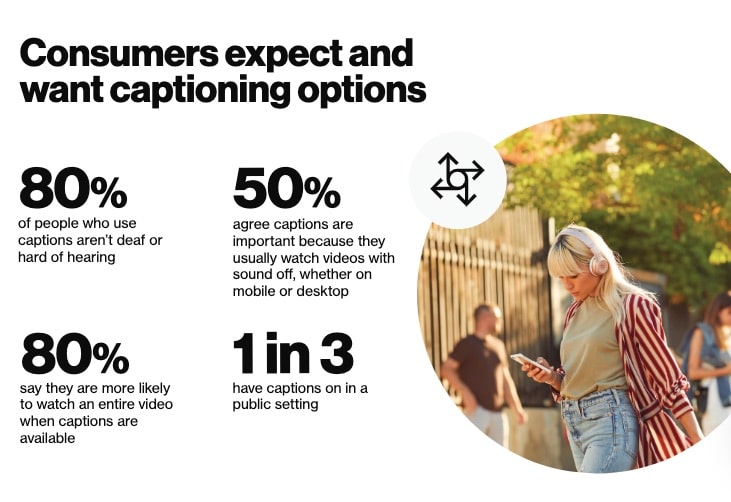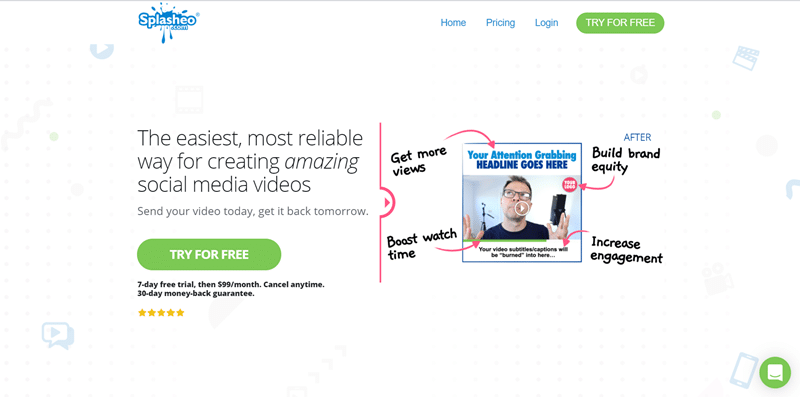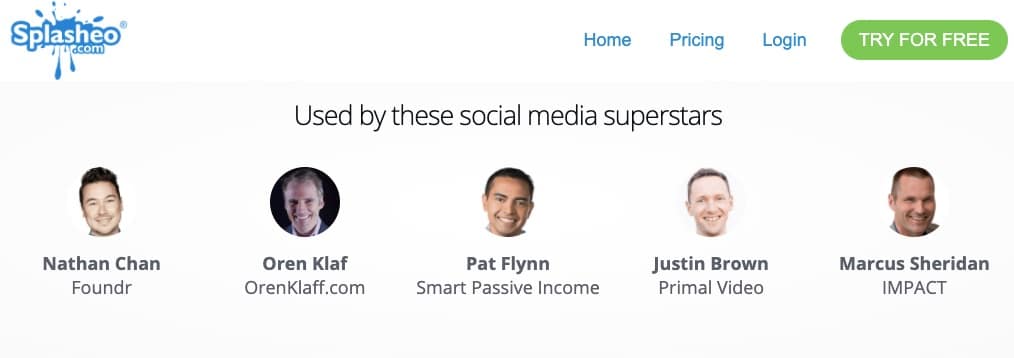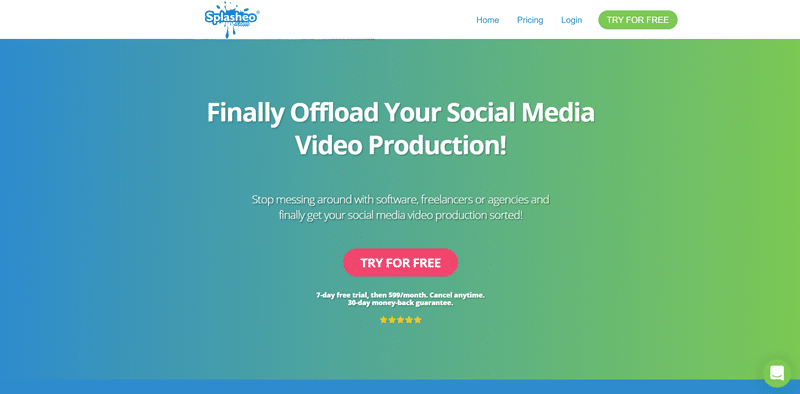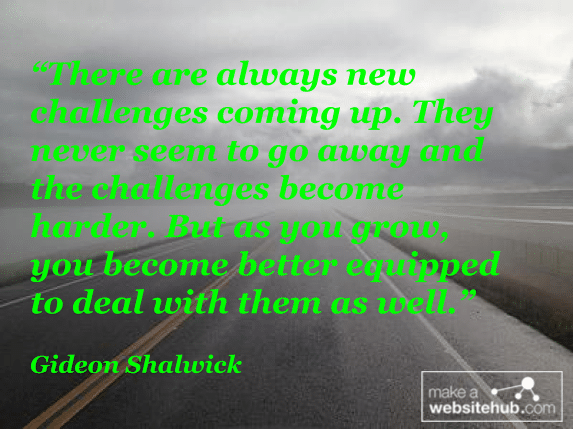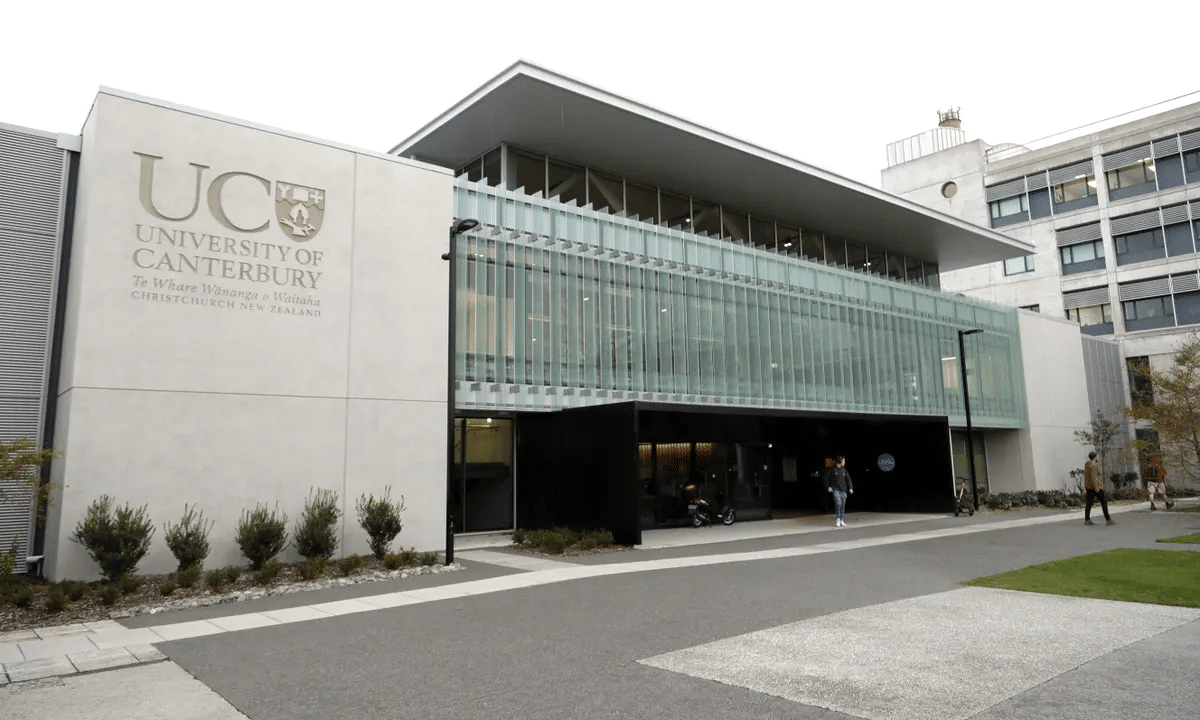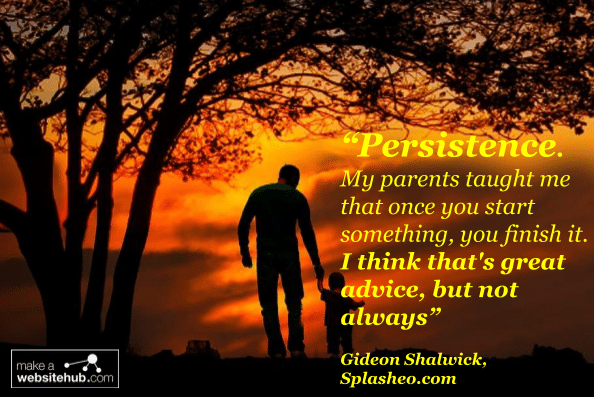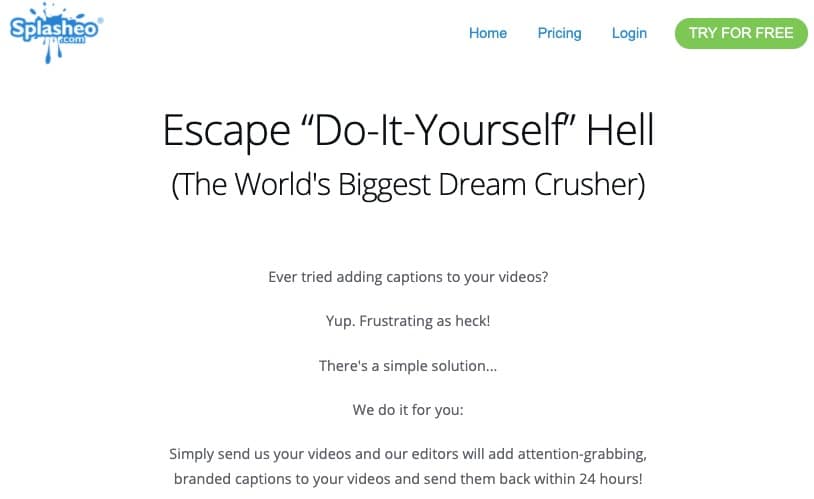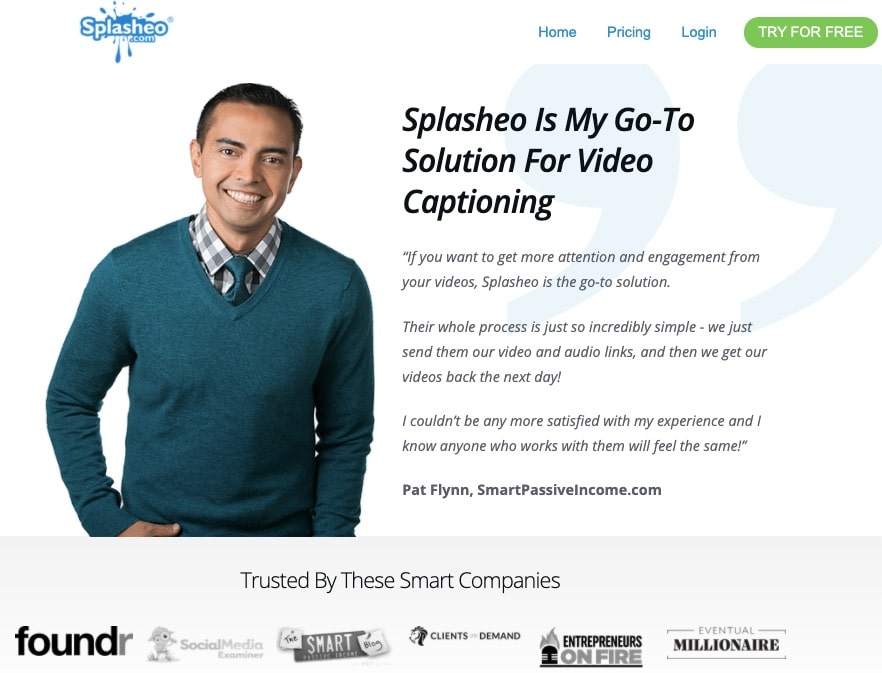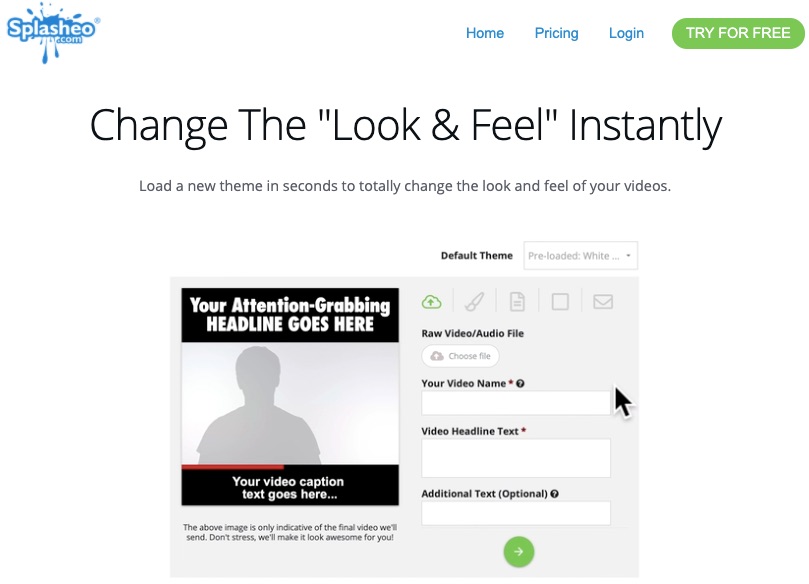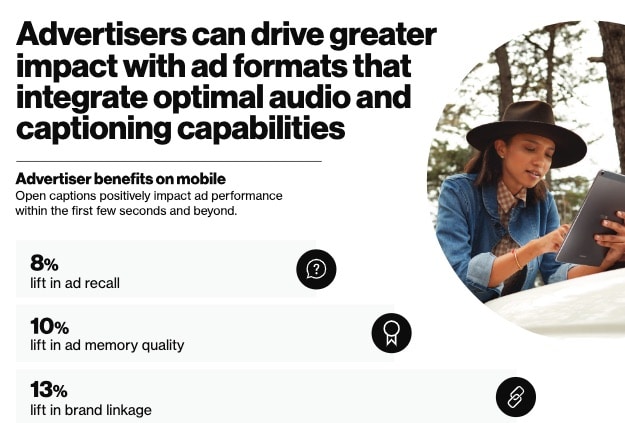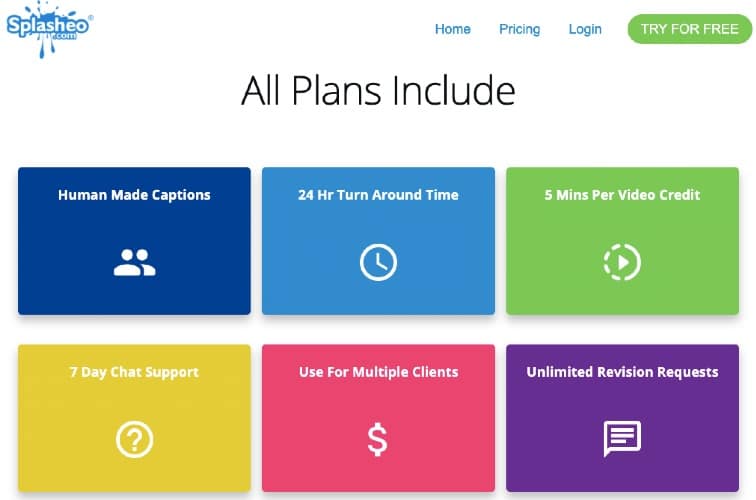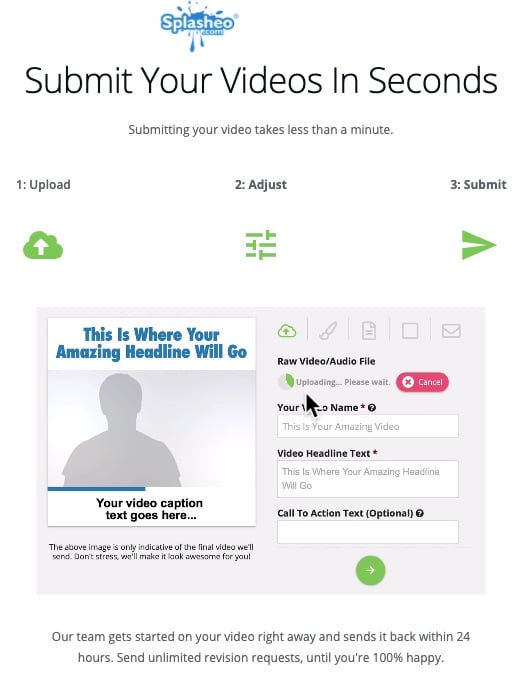Having videos without captions can feel like watching a silent movie — especially on social media and public places where people watch videos without sound.
One report says viewers watch 85% of videos on Facebook without sound.
This is where video captions matter. If you post video ads, captions are all the more critical because you’ll lose money without them!
With over 80% of media consumers more likely to watch an entire video when captions are available, captioning your videos becomes the 80/20 of editing videos for engagement.
Besides, accessibility laws like the WCAG 2.0 require video captions for government videos, training videos, and so. If you create video content for public institutions, then captioning is not negotiable.
That’s why I reached out to Gideon Shalwick from Splasheo.
Without the huge sway it holds on video engagement, we need to have more conversations about video captions and how to use them. That’s why this interview with Gideon Shalwick talks about how you can make videos more engaging with captions.
Key Takeaways From This Interview
Here’s what you’ll get from this interview:
- Captioning videos can boost engagement by 300%
- Captions improve video ads performance
- Video captions help you increase your social engagement on platforms like Facebook, Instagram, TikTok, and YouTube
- AI-assisted captioning isn’t always accurate and might end up costing you more money and time.
- You’ll still need to edit an AI-captioned content and it might give wrong spellings and miss important human emotional expressions that add color to captions
- Captioned videos reduce the need for fancy video editing
My Conversation with Gideon Shalwick
1. Hello, please introduce yourself
My name is Gideon Shalwick. I’m the founder of Splasheo and co-founder of some other companies in the past, but currently Splasheo.com.
Splasheo is a company where we take your videos and basically get it ready for social media.
We take your raw video and then we transcribe it manually. We add a headline for it and we add engagement factors, like a video progress bar, your logo, a call to action, a bunch of things.
Basically, all those things you need to get your video a hundred percent ready for social media to help it get as much attention and engagement as possible.
You can use it for any purpose you want. The key thing about it is that when you start captioning your videos, it helps them be more engaging just by default because people can’t help themselves but read the captions.
Not to even mention on social media; on the feeds when videos autoplay quite often, people don’t hit play on it, so they can’t hear it. So, if it’s not captioned, people can’t actually know what’s going in those videos.
2. What personal experiences or realizations inspired Splasheo? Why did you make it your top priority to solve the issue of video captioning? That is, of all the problems you encountered in videography and video editing.
That’s a great question. I’ve been in the industry now for about 14 years. Very quickly I got into video games and one of the key pain points that I had myself and I saw my subscribers had was this issue of video production.
Everybody wants to get a video out there to help build the audience, but then it always comes back to the video production, which becomes like a bottleneck or an obstacle for people to push through. And a lot of people wouldn’t be able to push through.
Similarly for myself, the challenge has always been to find a really good system and a way to produce a video so it’s not getting in the way; it’s not slowing me down. I’ve been searching for a solution like that for about 12 years.
It’s been two years since I started this version of Splasheo. About two years ago, maybe two and a half years ago, a friend of mine approached me. He runs an agency and he was doing some videos for his clients that he wanted to get captured.
He said, look, we’re trying to do this ourselves, but it’s a pain in the neck. Do you know how to do it? Can you help us with it?
At the time I didn’t really know how to do it. So I thought, okay, let me just casually look into this.
The more and more I looked into it, the more excited I got because it felt like I found the Holy grail for helping you create videos that are both engaging and watch-worthy without having to do a ton of editing.
I found that once you start captioning your videos, it immediately removes the need for all the fancy video editing that you need to do for these social media kinds of update videos.
We’re not talking about a Hollywood production kind of video here. We’re talking about these regular social media videos that you want to publish on your social media channels for them.
You don’t need to edit them anymore if you caption them really well. So, that was like the light bulb moment for me.
So I helped my friend. I started doing everything manually for him and it was a heck of a painful process. And I thought, ‘Hey, there’s gotta be an easier way.’ It turns out that there was not an easier way.
Even to this day, this process of adding captions to your videos and getting them social media ready is not just adding the captions. It’s also making sure it’s in the right format, in the right aspect ratio with the right engagement and attention, getting elements built-in; all of that stuff is needed to help make your videos a lot more engaging.
So, my friend was our first client. Then I helped another friend who also wanted to get it done and then friend after friend, then client after client.
We just did things really manually at the beginning, and just helped people.
In the beginning, there was no real profit incentive. I just wanted to find a way to help people again, because at that point I just came out of another startup that I began. I was just in the process of exiting and I was looking for the next thing.
I thought, well, what can I do to help people?’ And this was a really good way for me to do that.
So, I just progressively started helping more and more people and then eventually it turned into a business.
We did this through the Splasheo brand, which was originally doing something else a few years back.
Then we pivoted at about two and a half years ago and started this version of Splasheo. So that’s been the Genesis of where Splasheo comes from more recently.
Our biggest growth from what we can tell has been through word of mouth. And so we’ve been focused on creating a really good solution for our clients.
We’ve opted for slower growth at the beginning for the purpose of slowing things down and creating a really good solution and a good experience for our clients. That was the number one thing for us.
That’s been paying off because they were so wowed with what we delivered for them that they must’ve started talking to their friends.
Because, when we look at our traffic sources, that certainly seems to indicate that a lot of our traffic comes from people talking about us.
It’s not necessarily ads or affiliate promotions or things that we can directly track. A lot of our traffic we see comes from people typing in Splasheo.com or people searching for Splasheo on Google, which would indicate a higher level of word of mouth.
We don’t have a hundred percent way of tracking that properly, but that certainly seems to be what’s happening at the moment.
3. I’d think it’s impossible to have created Splasheo without challenges. What challenges did you face in developing Splasheo? How did you manage those challenges?
So, in the beginning, the first challenge was a technical challenge. How do we take this problem and solve it in such a way that we can solve it for more than one person at a time?
To be able to do that, we had to think really carefully about how to automate this, or systemizers without sacrificing the quality of the end product. So that was the real challenge.
That took us a while to figure that out and to build our systems and get it in place to be able to do that.
We deliver both a very high-quality result, much higher than you can get with automated software, but still be able to scale that and make it affordable enough for our clients as well. So that was the first challenge.
We nailed that within the first six to 12 months. So that’s been really good. I think that’s just an example of one of the challenges that you go through in starting up a business.
But I think the point is that there are always new challenges coming up. They never seem to go away and the challenges become harder. But as you grow, you become better equipped to deal with them as well.
4. You switched careers a couple of times; from an engineering degree from the University of Canterbury to publishing an ebook; from creating a blogging training product and now video captioning. How are these experiences helping you succeed today? And what are the toughest lessons you learned through these changes?
Great question. I have done a lot of things and some might say I’ve done too many things, and why haven’t I stuck to one thing for longer than a certain period of time.
On the outside of that, that may be what it looks like, but I’ve actually been busy with pretty much the same thing for the last 14 years. It’s just been manifesting in different ways.
Splasheo is the most recent sort of manifestation of something that’s been growing inside of me for a very long time.
When I look at each of these different experiences, I’m sure there have been some that would seem kind of unrelated to what I’m doing now.
For example, I did a degree in electrical and electronic engineering, and that was an absolute nightmare for me.
For four years I really struggled because basically the bulk of the course was calculus and it was incredibly challenging.
I have done a lot of things and some might say I’ve done too many things… but I’ve actually been busy with pretty much the same thing for the last 14 years. It’s just been manifesting in different ways.
I’ve often looked back with this disdain and sort of with regret and going, “why did I waste so much time for four years studying something that I absolutely hate?”
There was some of it that I did enjoy, but I felt like I was never going to use that information or whatever I learned there.
For quite a while I was regretting going to university and saying I should’ve started my business much earlier. I should have just not gone to university and just started the business right off the bat.
But, now that I’ve been at it for longer, I can start seeing a fuller picture. And I really do look at my engineering studies days as very beneficial for helping me think better.
Even though I haven’t used the material, the lessons that I learned and the skills that I built up from studying engineering:
- Being able to think analytically
- Being able to research things and being able to just search things,
- Even something as simple as being able to touch type and search on Google;
A lot of those skills I learned during those engineering days.
Also, persistence. My parents taught me that once you start something, you finish it. I think that’s great advice, but not always.
I think the only exception here is that if you’re convinced that you’re really on the wrong track, then it’s better to stop and start something else. I’ve definitely had those sorts of cases.
I didn’t pursue my engineering career because I didn’t feel that it was the right thing for me. And looking back, I’m really grateful that I made that change because it put me on this path of becoming an entrepreneur. And, it taught me things that are really helpful now.
I went to do another degree and a master’s in engineering management, which is like the management and system side of engineering. I enjoyed that a lot more.
My first job out of university was basically project management for high-tech or technology companies, senior manufacturing companies, that sort of stuff.
I learned a ton of really useful information there that helped me later on in being an entrepreneur.
The project management skill was very, very useful in helping me, later on, become an entrepreneur and to be organized and to think in terms of projects.
But again, working as an employee was not for me. I didn’t enjoy it because I felt it was so limiting for what I really wanted to do.
Looking back, certainly, each of those experiences definitely helped shape who I am today and helped me make better decisions, and also helped me work better as an entrepreneur now to be able to create what we’ve got today.
5. What’s the big picture—where would Splasheo be in the next five to ten years?
We can’t tell the future. But, if I look at the past, certainly, we’ve been through many different changes, even for Splasheo over the last two years.
It’s not as easy as it sounds, but what we’ve been trying to do as a team is to really look at any new changes that come along with the lens of “is this what our clients want?
Do they actually want this change?
Do they want this new feature?
Do they want this new direction?
Do they want this — whatever it is?
So, that’s sort of the lens we wear.
6. Does Splasheo guide its users on how to maximize Splasheo for success? Are there any useful resources or guides?
Not as much as we could. So far we’ve really been relying on people getting that sort of information from other places.
I mean, there’s so much free information. But we’re not ruling that out as something that we want to do, but, we don’t get a ton of requests from our clients for that sort of information.
Again, we only really would, as far as we can, respond to our clients and what their needs are. Certainly not ruling that out, but that’s probably something that we need to focus on a bit more in the future as well.
7. What’s the best thing anyone ever said about Splasheo?
There have been many different things, but I think some of the key things we keep on getting back from our clients is the fact that we provide a consistent result, which is great.
If you go to a marketplace or get a freelancer, or even an agency there’s quite often variability to the end result that you get.
Whereas, with the way we’ve set things up in Splasheo, you always know what you’re going to get. So it’s very consistent.
The other thing we get is that people love reliability. We’ve got a promise that if your video is under five minutes long, we’ll get it back to you within 24 hours, like clockwork.
If we don’t do that, then we often offer that credit back to our client for free as a way for us to show them how serious we are about getting videos back within the 24-hour deadline. So people love that we’re consistent and reliable.
8. I know Splasheo does video captioning. Is that the only video editing service you offer? If not, what other services do you offer?
At the moment it’s a very limited range of “in-video editing” that we provide, and that’s for a reason. One of the reasons is that it’s a pain in the neck to systemize something like that and to be able to scale that.
But another reason is we want to train our users as well, that they don’t have to really care so much about all the editing cause that just slows you down, especially for these kinds of videos that we’re talking about.
Some of our clients use a greenscreen background. Then, they provide an image for us that they’d like us to use. So, we key out the background and use that image instead.
We have built into our platform the ability to upload your own music. So if you wanna select a music track or audio track for background music for your videos, we can certainly add that to the videos as well. So I guess that would count as editing as well.
I’m not sure if you would call this editing, but we format your video into the right shape and the right aspect ratio for social media, depending on your choice.
For example, if your video is in a landscape, we can create it into a square format where you’ve got a bar at the top with your headline, so we edit that into the video for you. The captions are burnt into your videos, which is an editing function.
We can add a video progress bar down the bottom of your video to show the progress of the video and you can choose your colors. You can upload your own backgrounds as well.
We’ve just introduced recently our themes where we’ve got professionally designed video backgrounds for you. They’re images, but you use it inside your video to give you a really good result.
So, I guess all those things sort of form part of the editing in a way, but it’s not in-video editing. The other thing we also do have is the ability for you to add a call to action and a logo animation at the interview video.
We stitch it all together like that, and the end results are beautiful snippets or a small video that’s ready to publish on social media to help you get attention and the most engagement possible that you can get from your video.
9. Can you use these videos for ads?
Yeah, absolutely. A lot of our clients use our service for creating very engaging and compounding video ads. In fact, we do that ourselves. We use our own service to create our own video ads as well.
Specifically for Facebook, it’s really great because you can get a nice square format with a headline at the top, captions down the bottom, video in the middle, with the call-to-action at the end, it works really well especially now that Facebook has removed that requirement to have less than 20% text in your image or the thumbnail of your video.
Instagram as well, you can use the same video as long as it’s less than I think it’s 60 seconds. It might be for two minutes.
For YouTube, we’ve actually been hearing some of our clients getting some great results there, where they are using even the square format for running ads on YouTube. You might’ve started seeing more of them.
10. We all know that every product receives negative comments. What’s the worst you’ve received?
Yes, we have. But it’s been interesting because the bad comments we’ve were getting we’re not getting them anymore because I think we’re getting better with our targeting.
But at the beginning with our Facebook ads, people would always compare us to software and they would say, ‘well, using software is a lot cheaper. You can just buy this piece of software and then do it yourself.’ It was a fair enough comment and it was just interesting.
You would always get trolls; people saying nasty things. That’s just part of the game.
But I must say with Splasheo, we’ve had like the least number of negative comments from any business I’ve ever had. It’s been really great to be able to get so much support from our clients and the community.
11. I know your pricing is based on “credits per month.” Can you explain how this pricing plan works?
Yeah, sure. So at the moment, you can buy credits or it’s a subscription model with Splasheo.
The entry point is where you get four credits per month. And basically, each credit gives you up to five minutes worth of video that you can submit per order or per submission.
So if your video is like three minutes long, and you have a submission, you submit your order, that’ll use up one credit. If it’s six or seven minutes long, that’ll use up two credits, cause it goes in five-minute increments.
That’s what a credit is at the moment. For four credits a month, if you’ve got four videos that are under five minutes each, that means you can produce four videos for the month, et cetera.
We’ve got different plans. You can upgrade and downgrade as you want. We don’t have any lock-in contracts, and you can cancel at any time as well.
12. What’s one fascinating thing about Splasheo you’ve never talked about to anyone?
Yeah. I think what’s fascinating about us is that we’re a group of people who really care about our clients and the outcome for our clients. So we’re much more interested in the long-term gain than short-term gains.
What that might mean is we might lose sometimes in that short term. We might lose on a certain campaign, but what’s been really good is being able to have a really long-term view for Splasheo.
We’ve been reading some of Dan Sullivan’s information lately. He talks about having a 25-year plan.
What’s really great about that is that it really puts your mind at ease and you no more get upset when you might not reach your quarterly goal. Because you know that next quarter, you’ve got another chance to make it happen.
In fact, you’ve got 25 years to achieve your big, hairy, audacious goal, whatever you might want to call it.
So for us, it makes sense to have a much longer-term strategy.
13. Do you think there’ll be any trends in video editing that you’re probably preparing for right now?
If anything, I think it’s just gonna become more and more important in our world, especially with something like COVID, there are so many more people online now, and so many more people getting into video.
Perhaps people are not commuting as much to work anymore, or maybe they’re in meetings where there are other people in the same room where they want to watch the videos in silent mode as much.
But what we found is that there seems to be an increase in that. Maybe people are at home and they don’t want to have the sound on while they’re watching a video and they’re among their family, for example. So that hasn’t really changed.
In fact, I haven’t looked at the statistics, but there seems to be an uptake in that as well. So, I think, if anything, the market’s just growing.
We’re seeing more and more competitors entering the market as well, which means there’s this high interest in the area. I think it’s just a fun space to be in.
I think there’s a lot of cool things you can do in this space. The best thing is being able to help people get better results with the videos and help them build audiences and connect with the audience and make an impact more with the videos when they process them in the correct way.
14. Have you ever split-tested captions for performance?
We’ve had some of our internal tests and got better results with ones that are captioned. There’s been plenty of results as we’ve had to do a Google search on split tests with video captions.
You’ll see a bunch of results coming up just by adding captions already definitely increases the engagement view count, and we often get stories from our clients where they get an instant lift in views and engagement.
One of our clients had a 300% increase in views when he started using our service. It just blows your mind to think, ‘Hey, we really added captions into the video.’
About Splasheo
Splasheo is a video captioning brand owned by Gideon Shalwich who loves helping business owners use videos to build global audiences. With Splasheo, you can easily get your videos ready to be published on social media.

